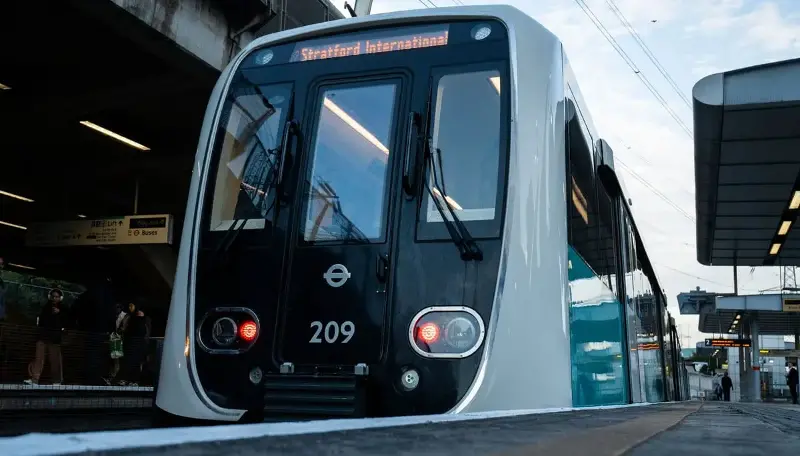
The first of a fleet of new DLR trains entered service on Wednesday – about 18 months behind schedule.
They have air conditioning, walk-through carriages and smartphone charging points and will boost capacity by more than 50 per cent on the network, which carries about 100m passengers a year in east and south-east London.
A total of 54 new trains – each with five carriages – are due to enter service by the end of 2026. The new trains will replace a fleet that is more than 30 years old.
The Standard revealed in June last year that the £900m new fleet of trains, which was built in Spain by the firm CAF, had run over budget by £61m and was facing delays.
In September last year, Transport for London admitted the launch had been delayed indefinitely after signalling problems meant the existing fleet of DLR trains had been going “too fast” – making it impossible to keep to timetable for the phased introduction of the new trains.
Many of the new trains were stuck in Spain when TfL hit further problems with a new depot when a contractor went bust.
A temporary timetable has been in place on the DLR – the Docklands Light Railway - since June to enable trains that have reached the end of their operational life to be taken out of service.
As more new trains enter service, the full timetable will be restored.
London mayor Sir Sadiq Khan was at the launch, which he hailed as an “exciting day” and a “major milestone”.
He first saw one of the new trains when he visited the DLR’s Beckton depot in February 2023 – an indication of how long it has taken TfL to get the upgrade completed.
Sir Sadiq said on Wednesday: “These new trains are amazing. Built with the latest cutting-edge design and technology, the trains will have 10 per cent bigger capacity, improved onboard customer information, mobile device charging points, air conditioning and better accessibility features for all passengers.
“The new DLR trains will significantly improve reliability and support growth in new homes and jobs, particularly for Londoners in areas like Stratford, Woolwich Arsenal and the Isle of Dogs.”
The new trains each have three “multi-use” areas for prams, bikes or luggage and three dedicated wheelchair bays.
They are part of a wider plan for the DLR – TfL wants to extend the network across the river from Beckton and Gallions Reach to Thamesmead, but is awaiting Government funding.
TfL commissioner Andy Lord said: “These state-of-the-art trains will transform customers’ journeys across the DLR network.
“Boosting capacity and improving reliability, these new trains will help the DLR keep pace with growing demand in this part of the capital. Customers will benefit from more comfortable, frequent, and accessible services.”
Earlier this month, DLR staff belonging to the RMT union took part in five days of strikes over pay and working conditions. The DLR staff were in dispute with KeolisAmey Docklands, the private consortium that runs the DLR on behalf of TfL.
Richard Graham, managing director of KeolisAmey Docklands, said: ““For passengers, these trains mean more space, comfort and reliability. For our people, they provide the latest tools and technology to keep the DLR running safely and smoothly every day.
“Above all, this investment is about unlocking the potential of east London – helping its communities thrive as new homes, jobs and opportunities are created.”
Richard Garner, UK director for CAF, said: “To have our trains operating in such a dynamic and iconic city is a great honour, and a source of real satisfaction for everyone at CAF.
“We are confident that these new trains will deliver reliable, modern and comfortable journeys, helping to support the continued growth and vitality of London for many years to come.”
© The Standard Ltd
